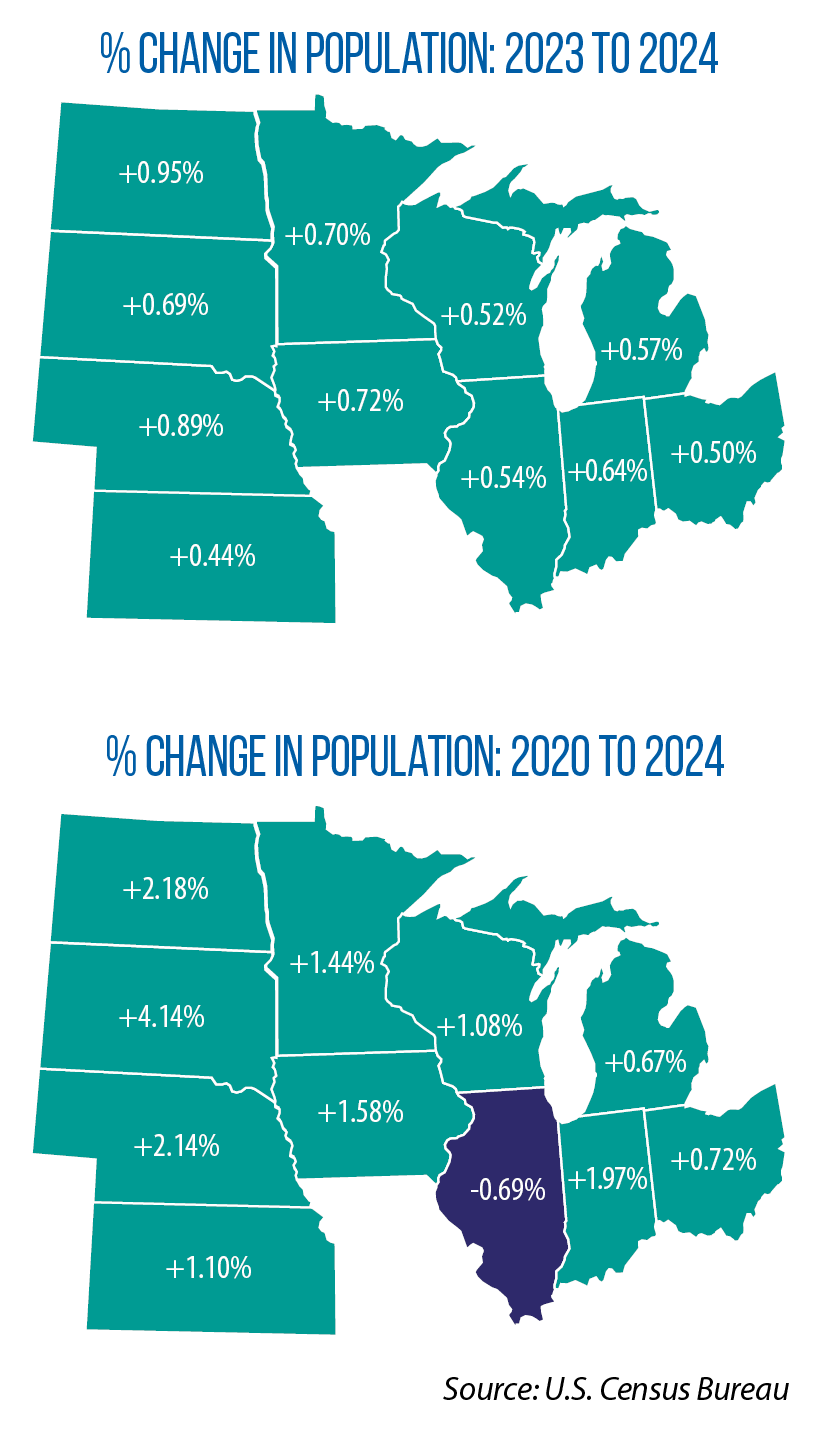Population is growing modestly in the Midwest, thanks mostly to international migration
Populations grew in each of the Midwest’s 11 states between 2023 and 2024, with the steepest increases occurring in North Dakota, Nebraska and Minnesota.
 However, no state in the region matched overall U.S. growth, which, at 0.98 percent, marked the largest annual rise in the population since 2001. The South added more people than all other U.S. regions combined.
However, no state in the region matched overall U.S. growth, which, at 0.98 percent, marked the largest annual rise in the population since 2001. The South added more people than all other U.S. regions combined.
Nationwide, the U.S. Census Bureau notes, international migration accounted for 84 percent of the nation’ population growth between 2023 and 2024. It also is the largest driver of growth in the Midwest.
One of the more striking U.S. population trends over the past five years has been “the diminishing role of natural increase,” says Kristie Wilder, a bureau demographer.
Yes, there continues to be more births than deaths in most states, but the gap between the two has narrowed considerably. And over the past five years, Michigan and Ohio have had a natural decrease in population — more deaths than births.
A third component of state population change is domestic migration. Between 2020 and 2024, the 11-state Midwest lost a net total of nearly a half-million people due to this intra-country movement, with Illinois experiencing the biggest drop. Indiana, South Dakota and Wisconsin bucked this regional trend, adding more people from domestic migration than they lost (see table).
Since the start of the decade, South Dakota has been the only Midwestern state to outpace national population growth: 4.14 percent compared to the U.S. rate of 2.57 percent. Based on population trends, the Brennan Center for Justice projects that Illinois, Minnesota and Wisconsin will lose one U.S. House seat each, and one vote each in the Electoral College, after the 2030 congressional reapportionment.
Components of Population Change in 11-State Midwest: 2020 to 2024 | |||
|---|---|---|---|
| State | Natural increase (births-deaths) | International migration | Domestic migration |
| Illinois | +25,566 | +278,657 | -336,181 |
| Indiana | +17,793 | +88,582 | +30,239 |
| Iowa | +10,095 | +49,793 | -9,482 |
| Kansas | +13,891 | +42,138 | -23,923 |
| Michigan | -38,340 | +166,465 | -67,785 |
| Minnesota | +51,570 | +80,796 | -47,930 |
| Nebraska | +23,681 | +33,331 | -13,758 |
| North Dakota | +11,086 | +13,165 | -6,540 |
| Ohio | -43,641 | +164,274 | -38,018 |
| South Dakota | +9,387 | +6,665 | +21,370 |
| Wisconsin | +74 | +63,489 | +2,958 |
| Midwest | +81,162 | +987,355 | -488,960 |
| Source: U.S. Census Bureau (and CSG Midwest calculations) | |||